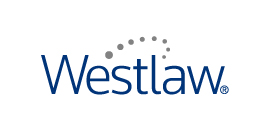In Abraham v. American Home Mortgage Servicing, Inc., Brooklyn Federal Judge William F. Kuntz II of the Eastern District of New York ruled against several hundred current and former homeowners rejecting their mass action attempt, finding that they were joined improperly. The defendants were several dozen mortgage originators and servicers including MERSCORP Holdings Inc. Plaintiffs alleged that the defendants induced them to enter into mortgages based on inflated appraisals; purposefully avoided local recordation statutes, thereby clouding the plaintiffs’ titles; transferred, bundled, packaged and sold their mortgages to investors simultaneously betting against those mortgages; and failed to use Troubled Asset Relief Program, or TARP, funds to help the plaintiffs, as required under law. The suit originated in New York Supreme Court, Kings County, in May 2012 but one of the defendants had the case removed to the federal court under the Class Action Fairness Act, 28 U.S.C. § 1332(d)(11)(A)
Judge Kuntz rejected the mass action attempt by the plaintiffs, finding that they were joined improperly. A “mass action” is defined as any civil action in which monetary relief claims of 100 or more persons are proposed to be tried together on the grounds that the plaintiffs’ claims involve common question of law or fact. “According to the allegations in the complaint, Plaintiffs engaged in separate loan transactions with different lenders in different offices in different states over a nine-year period. It is well established that separate loan transactions by different lenders do not constitute a single transaction or occurrence and claims by plaintiffs who engaged in those separate transactions generally cannot be joined in a single action,” Kuntz wrote. “Indeed, even claims by plaintiffs who engaged in separate loan transactions by the same lender cannot be joined in a single action.
Judge Kuntz also ruled that the plaintiffs failed to plead “sufficient factual matter” to state a claim to relief that is “plausible on its face.” “Plaintiffs appear to argue that their claims arise out of a common series of transactions because ‘Defendants were involved in a common scheme and plan,’” Kuntz wrote. “Plaintiffs have not provided any factual allegations supporting these contentions, such as evidence that Plaintiffs’ individual mortgages were based on inflated appraisals or specific omissions by particular employees responsible for issuing Plaintiffs’ mortgages.
 See Brooklyn Law School Library’s copy of A Practitioner’s Guide to Class Actions by Marcy Greer ( Call #KF8896.P735.2010) for more on the subject of class actions. This comprehensive guide provides practitioners with an understanding of the intracacies of the class action lawsuit.
See Brooklyn Law School Library’s copy of A Practitioner’s Guide to Class Actions by Marcy Greer ( Call #KF8896.P735.2010) for more on the subject of class actions. This comprehensive guide provides practitioners with an understanding of the intracacies of the class action lawsuit.
 The past year has seen other complaints looking to declare famous works as being in the public domain. See Klinger v. Conan Doyle Estate, Ltd about the stories of Sherlock Holmes filed in the Northern District of Illinois and Cabell v. Zorro Productions, Inc. about the stories of Zorro filed in the Western District of Washington. For more on the subject of public domain and copyright law, see the Brooklyn Law School Library copy of The Public Domain: How to Find & Use Copyright-Free Writings, Music, Art & More by Stephen Fishman. The guide explains the law and identifies problems and gray areas. It also covers trademark and patent law as they might conflict with copyright.
The past year has seen other complaints looking to declare famous works as being in the public domain. See Klinger v. Conan Doyle Estate, Ltd about the stories of Sherlock Holmes filed in the Northern District of Illinois and Cabell v. Zorro Productions, Inc. about the stories of Zorro filed in the Western District of Washington. For more on the subject of public domain and copyright law, see the Brooklyn Law School Library copy of The Public Domain: How to Find & Use Copyright-Free Writings, Music, Art & More by Stephen Fishman. The guide explains the law and identifies problems and gray areas. It also covers trademark and patent law as they might conflict with copyright.  The past year has seen other complaints looking to declare famous works as being in the public domain. See Klinger v. Conan Doyle Estate, Ltd about the stories of Sherlock Holmes filed in the Northern District of Illinois and Cabell v. Zorro Productions, Inc. about the stories of Zorro filed in the Western District of Washington. For more on the subject of public domain and copyright law, see the Brooklyn Law School Library copy of The Public Domain: How to Find & Use Copyright-Free Writings, Music, Art & More by Stephen Fishman. The guide explains the law and identifies problems and gray areas. It also covers trademark and patent law as they might conflict with copyright.
The past year has seen other complaints looking to declare famous works as being in the public domain. See Klinger v. Conan Doyle Estate, Ltd about the stories of Sherlock Holmes filed in the Northern District of Illinois and Cabell v. Zorro Productions, Inc. about the stories of Zorro filed in the Western District of Washington. For more on the subject of public domain and copyright law, see the Brooklyn Law School Library copy of The Public Domain: How to Find & Use Copyright-Free Writings, Music, Art & More by Stephen Fishman. The guide explains the law and identifies problems and gray areas. It also covers trademark and patent law as they might conflict with copyright. 


